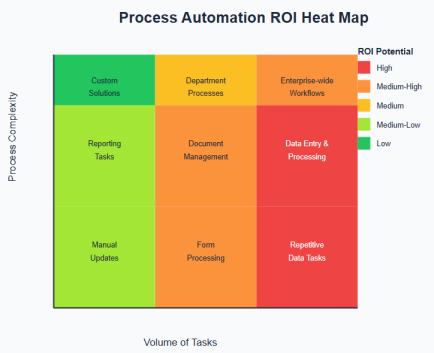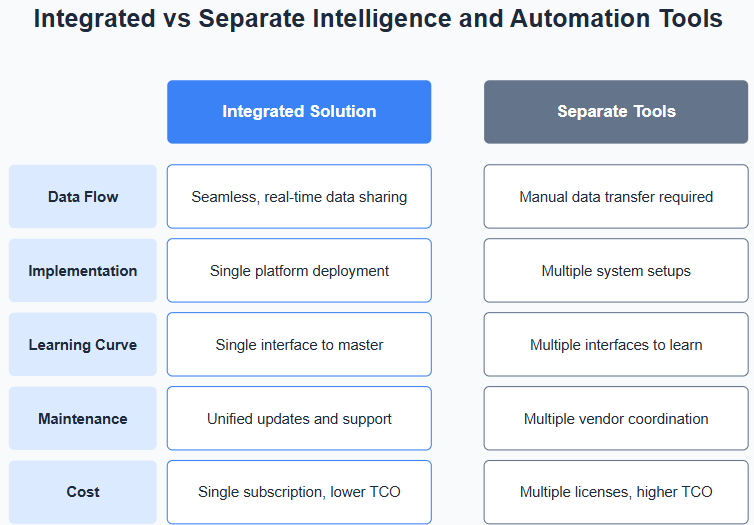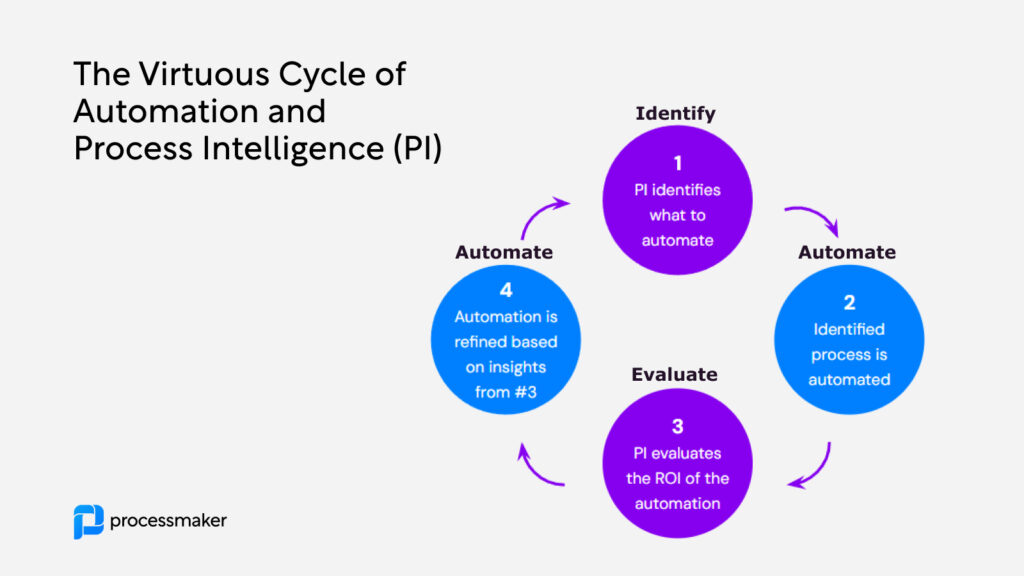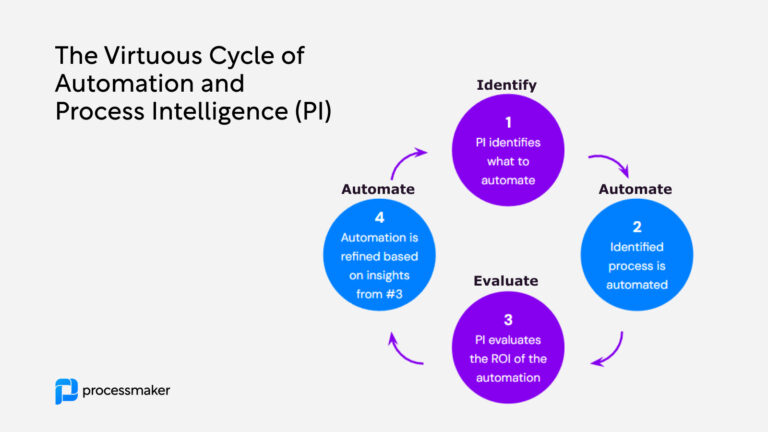Business process automation (BPA) has been shaping workplaces for years, with its initial goal being straightforward—automating tedious, repetitive tasks to make workflows smoother and enable people to focus on more meaningful work. Picture tasks like copy-pasting data, sending confirmation emails, or updating CRM records for hundreds of leads.
These were the “low-hanging fruits” of automation. They were easy to identify and highly impactful, providing a significant boost in productivity from the get-go. You simply observed or asked employees what they spent most of their time doing and turned those tasks over to automation.
However, as automation evolved, so did the needs of organizations. Automation expanded from handling a single task to managing interconnected chains of tasks, creating holistic processes. This shift required businesses to determine not just what to automate, but which processes would deliver the highest return on investment (ROI) when automated.

But identifying these high-ROI opportunities isn’t always straightforward. While automating repetitive tasks like thousands of copy-pastes was simple, uncovering more complex automation opportunities often felt like searching for a needle in a haystack. Everything, it seemed, could be automated to some extent. Yet, as the McKinsey Global Institute notes, while up to 50% of today’s work activities could potentially be automated by 2035, figuring out where to focus automation efforts remains a challenge.
This is where process intelligence becomes a game changer.
Step 1. Know what to automate
Imagine trying to automate tasks without knowing what processes exist in the first place. That’s akin to stumbling around in a dark room. Process intelligence acts as the flashlight, illuminating inefficiencies, manual bottlenecks, and repetitive activities within organizational workflows.
Process intelligence technology works by analyzing all existing processes to uncover inefficiencies and helps map workflows, so teams understand exactly how tasks get accomplished.
Often, businesses think a process follows a particular pattern, only to discover through analysis that deviations occur, creating inefficiencies that aren’t obvious at first glance. Process intelligence brings this data to light.
Key benefits of process intelligence:
- It provides end-to-end visibility into workflows.
- It identifies the ROI of automating each process, delivering a prioritized list of the highest-impact automation opportunities.
With data-backed insights, businesses can identify processes that are worth automating—not just the ones that are easiest to address, but those that promise the highest returns.
Step 2. First layer-automation
After identifying what to automate, it’s time to put these insights into action. Using modern BPA tools, even teams without deep technical knowledge can automate workflows seamlessly. Many of these tools boast user-friendly interfaces, including drag-and-drop functionality and AI-powered mapping capabilities.
However, this stage, while exciting, should not be viewed as the final destination. Automating a few processes and calling it a day misses the point. Optimization should be seen as an ongoing effort, not a one-off fix. What comes next is just as critical to reaping the full benefits of process automation.
Step 3: Evaluate what you have automated
Now that the first layer has been automated, it’s time to assess its performance. This involves bringing process intelligence back into the picture to evaluate the effectiveness of your automation efforts.
Why does this step matter? For a couple of reasons:
- Processes change over time: Businesses evolve, and the workflows you automate today might not align perfectly with tomorrow’s needs.
- There’s room for optimization: Perhaps you automated 30% of a procurement process, but with deeper analysis, you can push that figure to 60%, further streamlining operations.
- Missed opportunities: Budget or time constraints in the initial round may have left adjacent processes unaddressed. Now you can circle back and unlock more value.
With continuous monitoring, businesses can identify gaps and ensure their automation strategy adapts to new circumstances, extracting more gains over time.
Step 4: Automation 2.0
Armed with fresh insights from process intelligence, it’s time to enter the next level of automation. Whether that means refining existing automated workflows or tackling entirely new processes, the aim is the same—to drive further efficiencies, reduce costs, and empower your team to achieve more.
Every cycle of evaluation and re-automation brings additional performance gains, creating a feedback loop of continuous improvement.
A Virtuous Cycle
The beauty of combining process intelligence with process automation lies in the virtuous cycle it creates. Process intelligence identifies inefficiencies and opportunities. Automation tackles these issues, delivers measurable impacts, and saves time and resources. Then, process intelligence evaluates the outcomes, unlocking further opportunities for refinement or expansion.

Each iteration improves both the technology and the operational outcomes, reinforcing a loop where success feeds back into itself. Over time, this cycle enables businesses to scale their automation efforts systematically, tackle increasingly complex workflows, and maintain agility in responding to changing demands.
This continuous cycle not only improves operational efficiency but also fosters innovation and a culture of optimization. Teams are no longer bogged down by monotonous tasks and can instead focus on strategic initiatives, driving the organization forward.
ProcessMaker’s full-suite automation and intelligence pack
By continuously identifying inefficiencies, automating strategically, and iterating on successes, organizations can unlock unprecedented levels of productivity and innovation.
The combination of process intelligence and automation becomes an engine for sustainable growth. By investing in this virtuous cycle, businesses can future-proof their operations and ensure they thrive in an increasingly automated world.

However, not all BPA tools come with robust process intelligence capabilities that deliver complete transparency into business workflows. As a result, some organizations may find themselves needing to invest in separate solutions, such as a BPA tool and process mining software.
At ProcessMaker, we’ve integrated best-in-class intelligence tools directly into our platform. This ensures our customers can fully leverage the virtuous cycle of process intelligence and automation without the complexity of managing multiple systems.
If you’re ready to explore how this approach could revolutionize your organization, our experts are here to help. Get in touch with us today, and we’ll guide you through how ProcessMaker can create meaningful growth and efficiency tailored to your needs.





